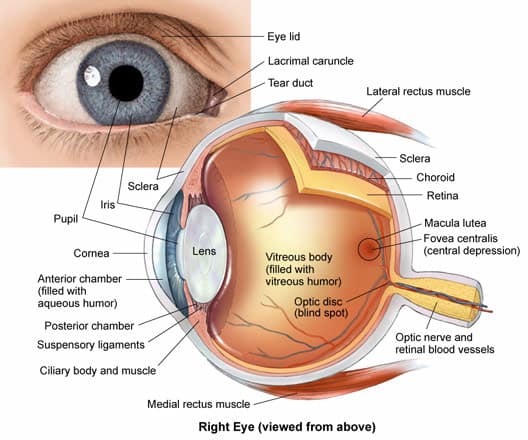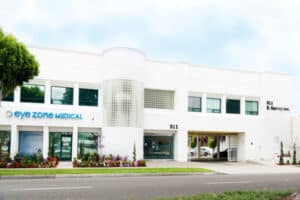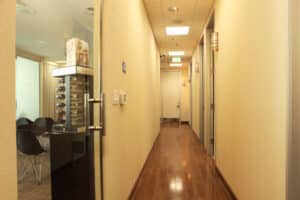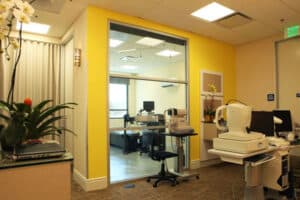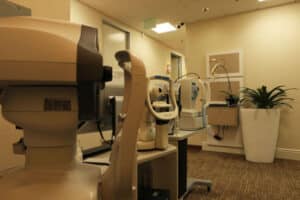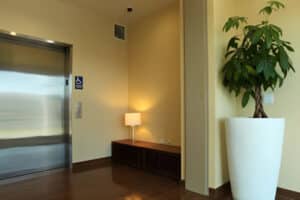Linda Vision believes in educating patients to ensure comfort and extreme confidence in every procedure. We can help you achieve visual freedom through a wide range of vision correction methods available at our Los Angeles eye surgery clinic. Explaining the difference between the normal eye and visual errors may help you to understand the numerous possibilities and options that every patient has. Whether you are nearsighted, farsighted, astigmatic, or just have difficulty reading, we are dedicated to providing the best visual outcome possible.
- Sclera – the opaque, white part of the eye
- Corneal limbus– the border of the cornea and the sclera
- Cornea – the transparent curved front part of the eye that covers the iris, pupil, and anterior chamber. It is the most important part of the eye for focusing light and is the chief refractive tissue.
- Iris – a thin, circular structure in the eye, responsible for controlling the diameter and size of the pupils and the amount of light reaching the pupil. “Eye color” is the color of the iris, which can vary between green, blue, or brown.
- Pupil – an opening located in the center of the iris that allows light to enter the retina.
- Lens – round structure that helps the cornea focus light on the retina
- Vitreous body – clear, jelly-like substance that fills the inside of the eyeball
- Vertebrate retina – a light sensitive tissue lining the inner surface of the eye. The optics of the eye create an image of the visual world on the retina, which serves a similar function as the film in a camera. Light striking the retina initiates a cascade of chemical and electrical events that ultimately trigger nerve impulses.
- Optic nerve – a bundle of over 1 million nerve fibers that transmit information from the eye to the brain.
How the Eye Works
In a normal, healthy eye, light rays pass through the cornea and the lens and come to a focusing point on the retina. The retina captures these light rays, processes them into electrical impulses and transmits the signals to the visual cortex of the brain via the optic nerve. The brain then interprets these signals as the images that we see.
Ready to Schedule an Appointment?
We are committed to helping you achieve your visual goals and guarantee that we will safeguard your interests at all times.
Tips for Taking Care of Your Eyes
We rely on our eyes to guide us through every part of our daily routine and personal interactions. We owe it to our eyes to do our best to keep them healthy and ensure they are functioning properly.
A Brief Look At Common Eye Diseases We Treat
Glaucoma is a disease that damages the optic nerve that transmits information from the eye to the brain. Many cases of glaucoma are associated with an increase in intraocular pressure, which occurs when fluid that is constantly produced in the eye does not drain as well as it should. Glaucoma often progresses “silently” or without noticeable symptoms until it starts to cause a reduction in peripheral vision. It can be managed with medication, laser or traditional surgery, but it cannot be cured.
Macular Degeneration
Macular degeneration is the gradual breakdown of the macula, or the portion of the retina responsible for clear central and detail vision. As the disease progresses, cells of the macula can die off and abnormal blood vessels can grow under the retina. Like glaucoma, macular degeneration can be managed with medical or laser therapy, but not cured.
Diabetic Eye Disease
Diabetic eye disease is a group of diseases that are more likely to affect people with diabetes. These include glaucoma, cataracts, diabetic retinopathy and macular edema. Diabetic eye disease can cause damage over time that interferes with vision and may even lead to blindness.
QUALITY CARE WITH LINDA VISION
Our Los Angeles LASIK specialists have been performing LASIK surgeries for over 20 years combined, with very positive results. Linda Vision’s experience and dedication to each patient, along with the use of the Wavelight EX500 excimer laser, make Linda Vision the ideal place to have LASIK surgery. We offer unlimited LASIK follow-up exams for 12 months after your Custom Wavefront LASIK surgery.
